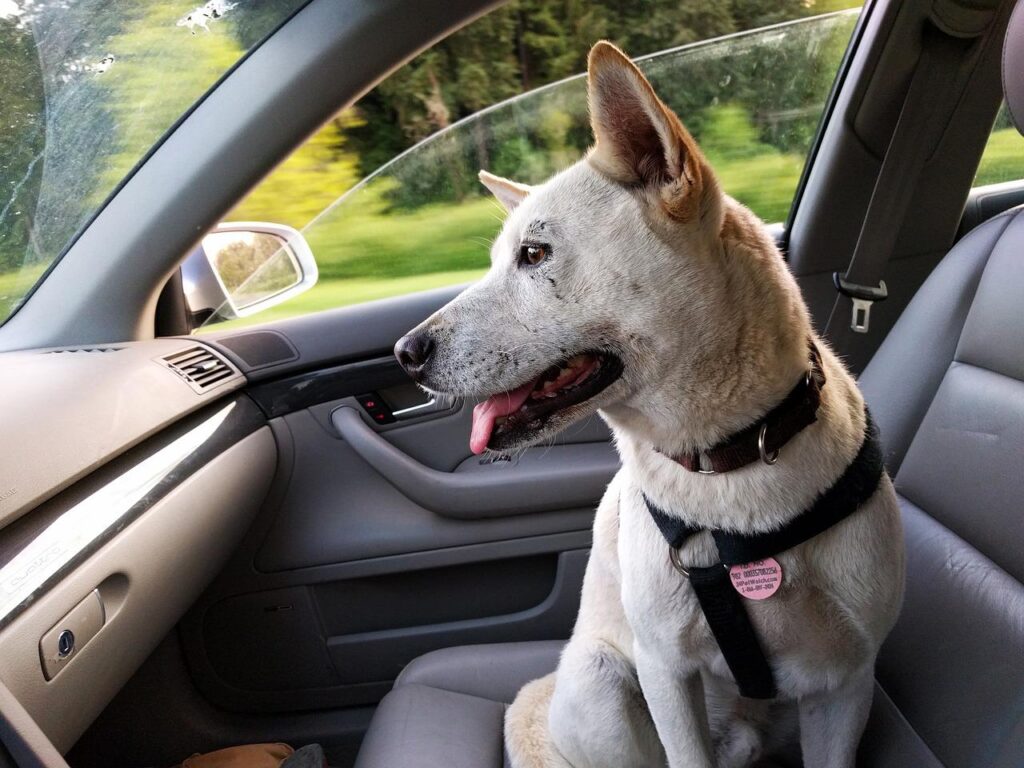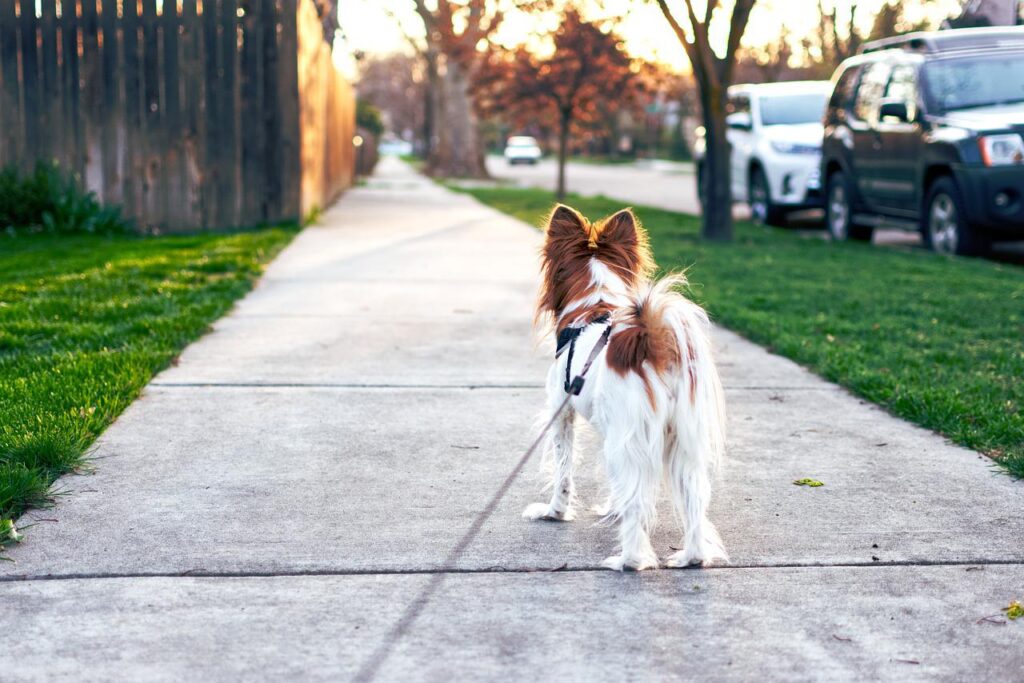Congratulations and thank you for helping a dog in need! You’ve decided to rescue, and you’ve finally picked out what you hope will be the perfect dog for you. The process often moves quickly, so being prepared with a plan for the first day, before you head home, is always the best idea. Here are some important tips as you are getting ready to bring your new dog home for the first time.
You may have already fallen in love with your new pup and can’t wait to get them home, spoil them, and introduce them to all of your friends and family. And, although this is what you would really like to do, STOP! Establishing a calm, orderly environment for your pup that allows them to feel comfortable in their new surroundings is a very important first step in establishing a long-term relationship.
Start by trying to imagine what your pup may have gone through to understand they may be fearful, or at least not quite sure what to expect initially. They may have spent days, weeks, or even months in a shelter environment without the love of a family or home, unless they were lucky enough to be in a foster home. Some have come from an abusive or neglectful environment, and even if they came from a loving family, they may be devastated about losing that family. Starting over and not being sure what to expect can be quite stressful. So, take your time and help ease everyone into this new relationship.
While most of us like to think positively and assume everything will work out, expect a period of adjustment. The sad fact is that as many as 20% of shelter and rescue dogs are returned within the first few weeks. That’s why it is so important to start things off right, and it begins as soon as you leave the shelter or rescue organization.

The Pickup and Car Ride Home
The primary goal should be to try to keep things calm and positive when leaving the shelter and while in the car.
Your dog will probably be excited to get out of the shelter, if that is where they have been staying. Be prepared for some excited behavior and pulling, which is normal.
Keep any children calm and monitored if they are with you. Also, don’t bring other pets when picking up your new dog. This will only create a more chaotic situation and lead to possible stress reactions.
You probably won’t be sure how your dog does in the car yet at this point. Be prepared in case your dog does get car sick or becomes scared. It is a good idea to have towels or a protective seat cover on hand if you think you could be bringing home a furry friend. Also, be prepared in case there could be vomiting or an accident. Even dogs that typically do well in the car may have more anxiety on the trip home due to the combination of excitement, uncertainty, as well as the new people and surroundings.
As Soon as You Get Your Rescue Dog Home – It’s “Potty” Time
Immediately take your dog from the car to your designated bathroom area. The excitement and stress will probably create a pretty immediate need to urinate. Praise your new dog when and if they do urinate in the designated area. This helps to establish where the correct bathroom location is right off the bat and helps to eliminate initial accidents and upset.
Once you’ve spent a little time outside and let your new dog smell and become more familiar with your outdoor space, you can start introducing them to your home or other family members living in your home.

Introduce Any Other Family Dogs on Neutral Territory
If you do have other dogs in the home, even if they have met your new rescue dog at the shelter or on a previous occasion, it is best to introduce them on neutral territory before bringing your new dog directly into the home. It’s usually easiest to have both dogs leashed and allow them to meet each other a block or two from your home to avoid territorial feelings or behavior from your existing dog(s). Once they have greeted each other for a few minutes, walk them home together.
Slowly Introduce Your New Rescue Dog to Your Home One Area at a Time
Start by introducing your new dog to the most key areas first. Where they will eat and drink, and a family room or area that might spend most of their time. Depending on the level fear or skittishness your dog may be experiencing, you may want to stop here and let them slowly acclimate to these areas and give them a safe space such as a bed in protected corner, blankets under a coffee table, etc. If your dog does not appear fearful, you can continue introducing them to the rest of your home and any additional family members they may not have met yet. It is best to tell children or family to allow the dog to approach them first. It can be frightening for many dogs to have an excited person lunging towards them. By trying to keep all early interactions calm and positive, you are laying the best groundwork for long term success.
Give Your Dog Water and Any Diet Recommended by the Shelter or Rescue Organization to Start
To help avoid tummy issues, especially in an already stressful situation, it is highly recommended to continue to feed your dog at approximately the same time(s) and the same food as at the shelter or rescue organization. Your dog may or may not eat initially, which is normal. If you choose to change your dog’s feeding routine, do it gradually over time. Slowing mixing in the new food with the old is highly recommended.
Show Your Dog Where They are Allowed to Lay Down and Where They Will Sleep
It is important to start setting up boundaries and expectations from day one. If you do not want to allow your dog on furniture or in your bed, point them in the direction of a cozy place to rest and if they do attempt to jump on furniture, direct them to where they are allowed to be, and then praise them when resting in that place.

Start a Walking Routine Immediately
Exercising has many positive effects and can help you and your pup starting from day one. If you can walk your dog, it is highly encouraged to do so. A walk will help cut through anxiety and nervous energy as well as help cement the bond between you and your dog with a feeling of “pack” belonging. You do not need to jog or walk for long periods of time, unless you and your dog are both highly athletic. A simple walk around the neighborhood can do wonders, and it has similar benefits for the dog walker as well.
Continue to maintain a calm environment for the first several days to several weeks depending on your dog’s anxiety level and slowly ease them into your regular activities and routine.
Now, take a deep breath. You’ve got this. You may need to pack a little extra patience as you start on this journey, but you are likely starting a loving relationship with a new best friend that will last through their lifetime.
